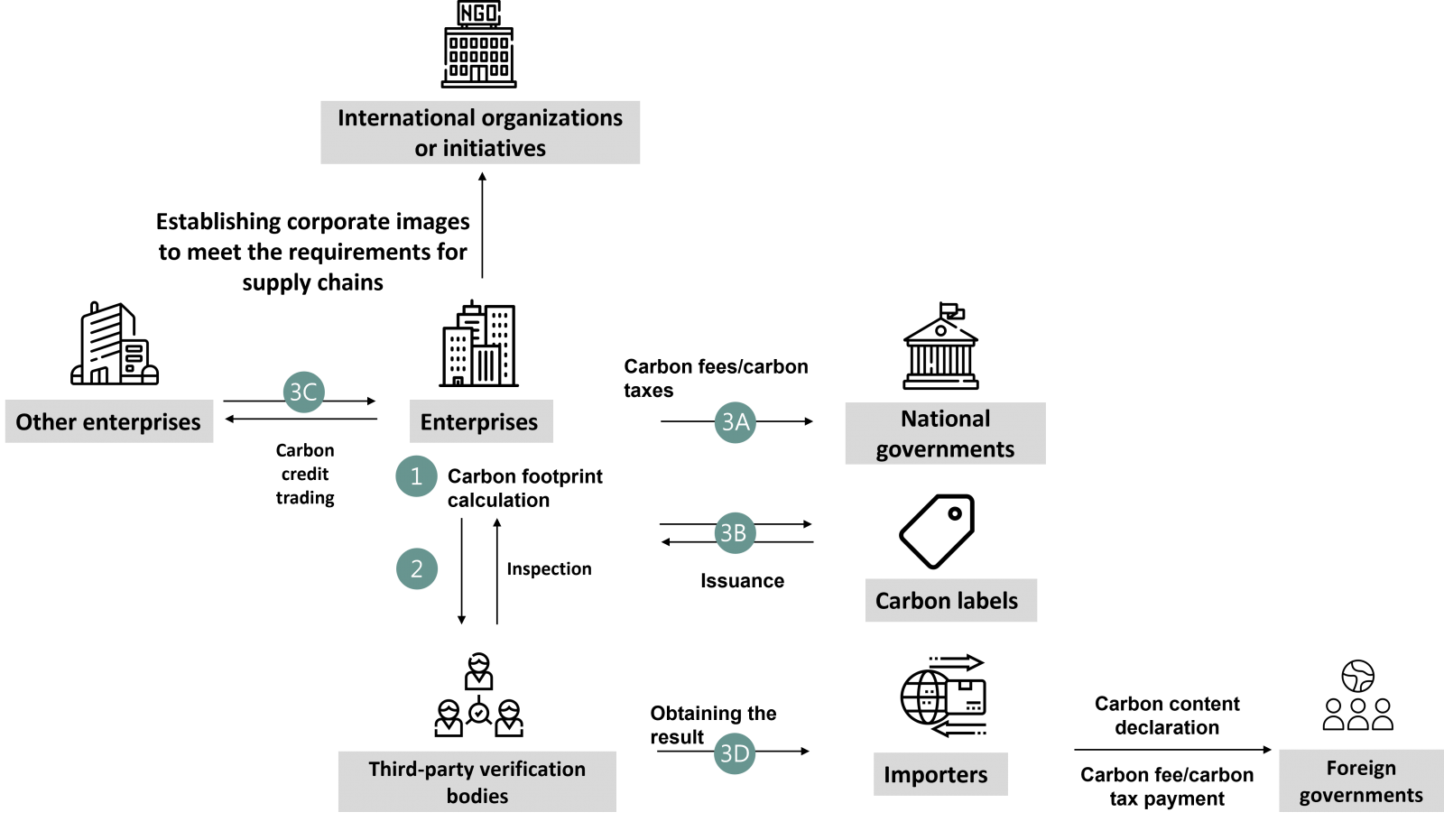Carbon credits
The second is the carbon credit, which represents a certified emission reduction. Reduction projects can be complex due to differences in countries, certification units, certification standards, and applicable scopes. The units of credits of each project are also different; some can be interchanged with each other, while some are applicable only to individual mechanism, such as the credit project launched in Taiwan.

Carbon footprint verification
Carbon footprint verification (CFV) refers to the calculation of carbon footprints (carbon emissions) generated in all activities and can be divided into the organizational type (e.g., the entire enterprise) or product type. The product type is also known as the product carbon footprint. The following is the relation chart between the purpose and benefits of CFV for enterprises.
Carbon footprint calculation
There are five steps of carbon footprint calculation, namely determining the products to be examined, making the map of manufacturing process and defining boundaries, collecting data of greenhouse gas, mass balance and calculation, and finally uncertainty analysis. The manufacturing process map is to list the raw materials, energy, etc. used in the process according to the product life cycle. The life cycle is divided into five phases: raw materials, manufacturing, transportation, use and disposal. The product life cycle analysis varies depending on the product types of each company, which can be divided into B2B and B2C. The main difference is that the measurement for B2B products covers emissions from the extraction of raw materials to the transportation phase, while that for B2C products calculates emissions from the extraction of raw materials to the disposal phase. After obtaining the carbon footprint amount, it must be inspected by a third-party verification agency for credibility before being used for carbon label application, export declaration, etc. Enterprises can apply for certification to a third-party agency. After the third-party agencies receive the application, they will assign inspectors to the companies and factories to conduct on-site inspection. If there is no amendment needed after the inspection, the third-party agency will issue a certificate. The certificate must be renewed regularly, and the renewal frequency is based on the existing organizational norms.
Requirements for carbon footprint declaration
- National governments: In response to the trend of carbon neutrality, governments around the world have introduced domestic carbon fees or carbon taxes not only to encourage companies to reduce carbon emissions, but also protect companies from higher carbon costs when exporting products.
- Foreign governments: To protect domestic enterprises and avoid the growing problem of carbon leakage, governments have successively introduced systems such as carbon tariffs or carbon border adjustment mechanisms, requiring imported products to declare carbon content and pay fees. If they fail to comply with the regulations, they may not be able to enter the market of the country (region).
- Supply chains: To fulfill social responsibilities, enterprises have begun to implement numerous carbon reduction plans and committed to achieving carbon neutrality. In addition, they also require upstream and downstream suppliers to achieve the goal together (The inventory of greenhouse gas scope 3 covers upstream and downstream enterprises).
Benefits of carbon footprint calculation
- Obtaining carbon credits: Enterprises can obtain carbon credits only after the carbon reductions have been certified. Carbon credits can be divided into domestic carbon credits and international carbon credits. Once obtained, enterprises can trade in the emission trading scheme.
- Obtaining a carbon label: After the calculation of product carbon footprint for enterprises is certified, the carbon label (or carbon reduction label) can be displayed on the product, so as to provide consumers with ecofriendly products.
- Establishing a corporate image: The commitment to achieving carbon neutrality, RE100 or establishing a Science Based Targets initiative (SBTi) not only help make the carbon reduction plan clearer, but also serve as a means of publicity to establish a green corporate image.
- Improving competitiveness and meet requirements of supply chains: Declaration of carbon content will become a must. Enterprises can make improvements after calculating their carbon footprints. Products with lower carbon content have more advantages for procurement and can also avoid being excluded from the supplier list.
Sources
Update: April 7, 2022
